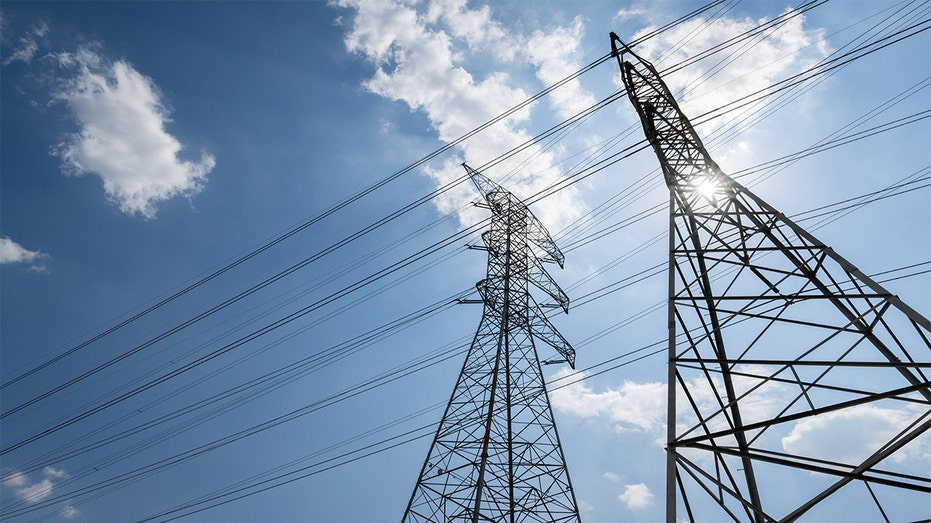Texas power crisis underscores green energy unreliability, expert says: 'get used to more blackouts'
Wind power in Texas is producing a fraction of its total capacity, ERCOT data shows
Energy expert Jonathan Lesser warned that the power crisis in Texas underscores the broader problems with green energy in an interview Tuesday with Fox News Digital.
Lesser — an adjunct fellow at the Manhattan Institute who has more than 30 years of energy industry experience — argued that, because of renewable energy sources' intermittent quality and the lack of reliable utility-scale battery storage infrastructure, forcing a green transition will lead to more power outages.
DOZENS OF REPUBLICANS DEMAND BIDEN ADMIN'S PLAN FOR NATIONWIDE POWER CRISIS
"The reality is: we're going to have to get used to more blackouts as long as we continue down this green energy path," Lesser told Fox News Digital. "The technology simply isn't there. You're going to either have more blackouts or more requirements to conserve energy."

Transmission towers are seen at the CenterPoint Energy power plant on June 9 in Houston, Texas. (Brandon Bell/Getty Images / Getty Images)
The Electric Reliability Council of Texas (ERCOT), the Texas grid operator, issued a conservation appeal on Monday, urging consumers and businesses to voluntarily conserve electricity. The notice, which went into effect on Monday, explained that high demand and lower-than-expected wind energy production both contributed to a supply shortage.
Between 2-3 p.m. on Monday, the "tightest hour," wind power in Texas produced a meager 8% of its total capacity, according to ERCOT.
WHITE HOUSE BRACES FOR ANOTHER UGLY INFLATION REPORT
"The least windy time of year is summer when electricity demand in Texas peaks," Lesser said. "So, you've got a resource that is at its highest in the spring and fall when electricity demand is lowest. That means the wind as a resource has a low economic value because you want something that's available when demand is highest."
"So, it's not surprising at all that Texas, which has the largest wind capacity of any state in the country, is seeing this problem," he continued.
The Biden admin is focused on green energy instead of making choices to lower prices: Greg Zerzan
Former acting assistant treasury secretary Greg Zerzan discusses how Biden and his administration continues to push clean energy at G7 as gas prices continue to skyrocket on ‘Fox Business Tonight.’
Utility power demand historically peaks in July and August in the U.S. with fossil fuel generation accounting for the vast majority of supply, according to the Energy Information Administration. In July 2021, about 68% of total nationwide generation was produced by traditional fossil fuel sources, while just 10% was produced by wind and solar sources.
GREEN ENERGY POLICIES WILL PUSH PRICES HIGHER THIS SUMMER, FERC COMMISSIONERS WARN
However, Texas has made an aggressive green energy push over the last several years. The state has generated the most wind power of any state for 16 consecutive years.
But while Texas has constructed more than 35,000 megawatts of wind capacity, equaling about 25% of its total generating capacity, wind accounted for just 12% of the state's power generation in July 2021, EIA data showed.
Green energy is too expensive to be sustainable: Lomborg
Copenhagen Consensus president Bjorn Lomborg reacts to Biden's climate commitments on 'FOX Business Tonight'
"If you build 500 megawatts of wind capacity, that doesn't mean you're getting 500 megawatt hours of energy every hour of the day," Lesser said, noting the intermittent quality of wind. "On dry land, wind capacity is probably around 30-40%, depending on what part of the country you're in."
He also said U.S. utility-scale battery storage infrastructure, which is needed to provide power during periods without high wind generation, is currently insufficient. The U.S. had about 4,605 megawatts of total battery storage by the end of 2021, but regularly consumes more than 400,000 megawatts continuously per day.
CLICK HERE TO READ MORE ON FOX BUSINESS
"Battery storage is, at this point, a pipe dream," Lesser told Fox News Digital. "There's very little battery storage in the entire country."
"It's just a pure fantasy that we're going to have enough battery storage to meet demand," he added.























